LD: Snow Church
Detective, Story-Rich, Suspense, Drama
Notes:
This level design project was made streamlined as the game writing of Snow Church was made, so the changes from the game writing immediately affect the workflow and the level design progress.
This is a spin-off of the Control game by Remedy Entertainment, but it’s a slow-paced detective type of game that focuses on gathering clues and multiple choices that affect the story flow.
The final output of this project mainly focused on narrative, level design, environment design, and light design aspects, so the programming sides are not the priority.
There are live-view version of One Pager at the bottom of the page.


Real-Life Research about Nature Area
Input: Pinterest pictures, Google images
Output: type of natural areas with a lot of trees, size different between the areas, variety of biomes in different areas
(Some) Notes:
Unlike human-made places, natural places tend to be more chaotic and unstructured, especially if they’re not used a lot by humans.
It needs a lot of layered vegetation to make a nature area feel natural.
Areas that have more visible elevated ground usually use rocks to separate the higher ground and the normal one; the seamless elevation tends to happen in bigger areas like grass fields.
Available Assets for Unreal
Input: free assets at Unreal Marketplace & Quixel Bridge
Output: list of assets that can be used, the possible nature theme from the available assets, and limitations for making the level & narrative
(Some) Notes:
There are tons of natural asset collections, but the only available 3D models of the trees are the European ones.
There are a lot of outdoor things that can be used, so it’s not a fully ‘natural’ area.
The assets tend to have different color schemes, so it’ll need some adjustment when using it on the final version.
Research Phase
This project was inspired by Control, Detroit: Become Human, Alan Wake II, and What Remains of Edith Finch, so the level design must accommodate heavy storytelling with big & strange exploration areas that’ll lead the player to experience flashback visuals/gameplay. The level design development used an iterative method with rapid prototyping, which also adapted to the narrative that changed in the development process.
Game Inspiration
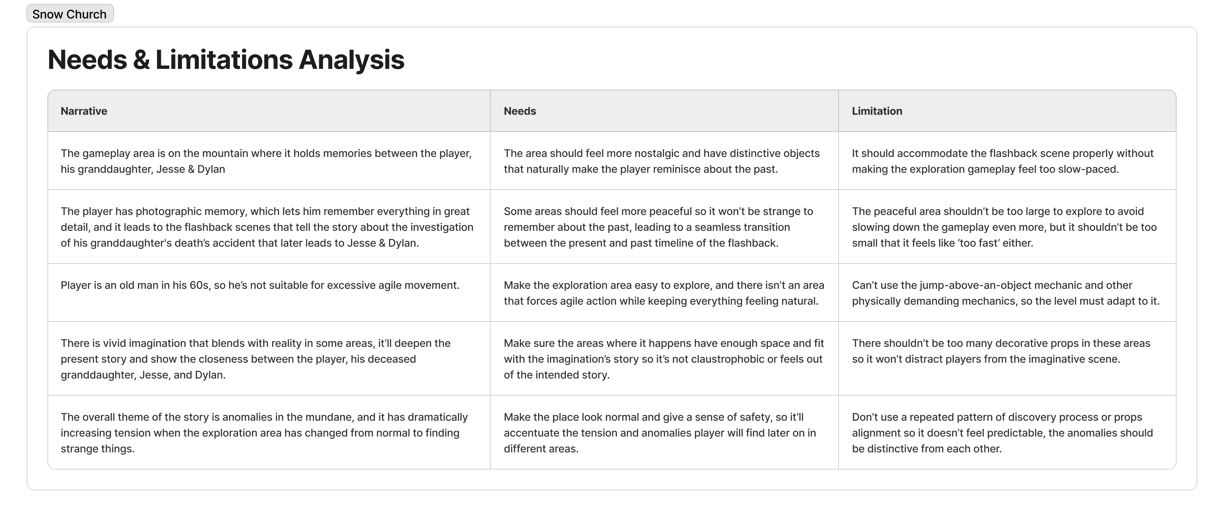

Needs & Limitations Analysis
The narrative and research data give an overview of the events and the places in the story, so I converted it into specific criteria that will be used as needs and restrictions for the level.
To introduce the player to the ‘flashback time’, I used re-living the memories method as the trigger: making the player do things that he used to do when he came here with his granddaughter. This way, it also shows how the player treasures this place deeply in his heart by being nostalgic.
To give a grand feeling when entering key areas (sunflower field & churchyard), I decided to make the connecting path into those places narrow. Considering 4 of 6 areas have a medium-big scale and the game pace cannot be too slow, the availability of the areas really focuses on the story flow without extra areas for exploration.
Even though the story was designed to be full of flashbacks, the game beats were made to specifically be used in the blocky area that will be the mountain area in the present day.
The story progression is focused on triggering a flashback, so it's a very straightforward story flow, with some surprise when the conflict arises.
Mission Flow Version 1






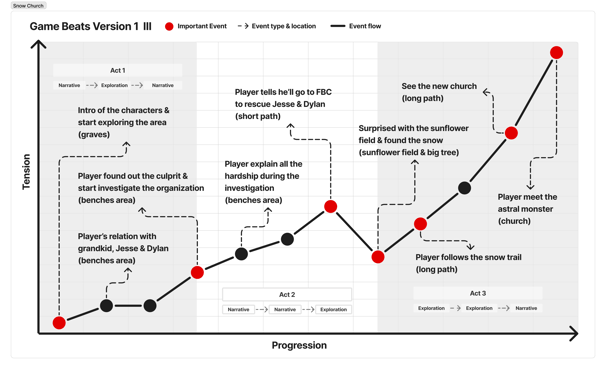

Game Beats Version 1
Area Flowchart Version 1
Beat Chart Version 1
Low-Poly Props for Blockout
I made the low-poly .fbx version from the ready-to-use asset in Blender. To shorten the duration, I’m focusing on making the non-organic objects like graves, benches, cars, etc. If it’s an organic object, I’ll use the ready-to-use assets but with world grid materials so it doesn’t become too distracting on the blockout version. After it finished, I imported it back to Unreal 5.2 and added collision.


Blockout & Polishing Iteration Version 1
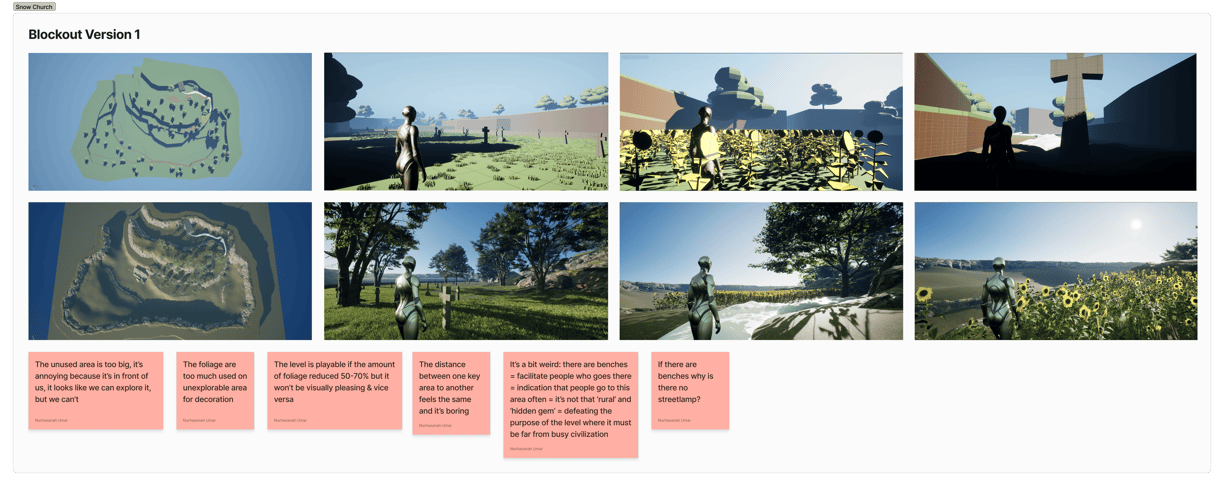

In this first iteration, I focused on making the areas feel peaceful and big to emphasize ‘how big the world is and we’re just small humans trying to explore it’—feeling, so I used an open grassland in a valley theme. Especially in the key areas like the big tree and church, I made it enormous so it becomes more memorable. The usage of human-made objects was minimized, so when the player saw one of them, it immediately caught the player’s attention & encouraged them to investigate it.
This blockout is simple and fulfilled the intention of the level, but there are some problems (refer to the sticky notes). And the main problem is the ineffectiveness of the usage of the foliage. Because it’s an open area, it needs tons of foliage in unexplorable places for decorative purposes, and it’s very heavy on performance even though I’m using Nanite. When I was customizing the first light (directional light), my PC went into a black screen repeatedly. That’s when I know this blockout is unusable and needs a lot less foliage usage.
After some analyzing, the story aspects are good, and I only need to change the story that happens in the benches area so it happens in the graveyard, so it’s a minor adjustment. As for the area flowchart, I’m adding a church’s yard area so the transition before entering the church becomes more seamless.
Area Flowchart Version 2


Blockout & Polishing Iteration Version 2

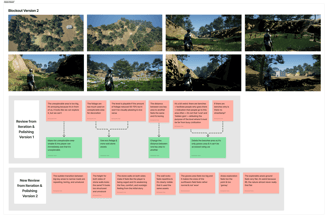
Learning from past mistakes, I must design the blockout with less open-space area to minimize the foliage usage. This time, I approached it using a different theme: a mossy valley area with two higher grounds near it. This way, I can use the rock wall as the area boundary & only add necessary foliage on it. It worked wonderfully and reduced the foliage count by a huge margin. From the reference images, the mossy valley area tends to have more flat and linear-height ground. I also add god rays to deepen the mood, and the performance is still stable at 120 FPS with no error.
But after some testing, there are new issues (refer to the sticky notes). This time, the main problem is the exploration experience feels too flat, and the main reason for that is the flat walking ground. Because the areas are sandwiched between two high grounds, it makes the player focus on the walkable ground, and because it is flat and has no elevation, it becomes more boring the more players explore it. Overall, it feels like a walking simulator in a trapped area and makes us search for a way out instead of feeling free with nostalgic feelings.
At this time, I also realized the narrative feels so mixed and confusing because it tells a lot of information with different themes at once. There is no single designated theme to tell in an area, and it makes the player overwhelmed by information.
Environmentally engaging problems were solved by making the player interact with the environment itself, and it's delivered in a way that deepens the story's intention of reliving the memories. Lots of new missions were also added to give the player reasons to explore the mountain deeper.
Rather than organizing the area based on the usage (e.g., in Black Puddle, the complaint room has an area for civilians and a room only for officers), like a human-made building, I decide to organize it based on the ground height because it’s a natural place.
I also open the possibilities of making more explorable areas outside of the flowchart when making the blockout, because I realized nature has different characteristics with human-made buildings. One of them is that not every area of nature has a purpose, and mostly it’s pure for exploration.
Some of the story flow changed to adapt to the improved version of the mission flow. Other than that, there are no major changes in the tension development.
Mission Flow Version 2
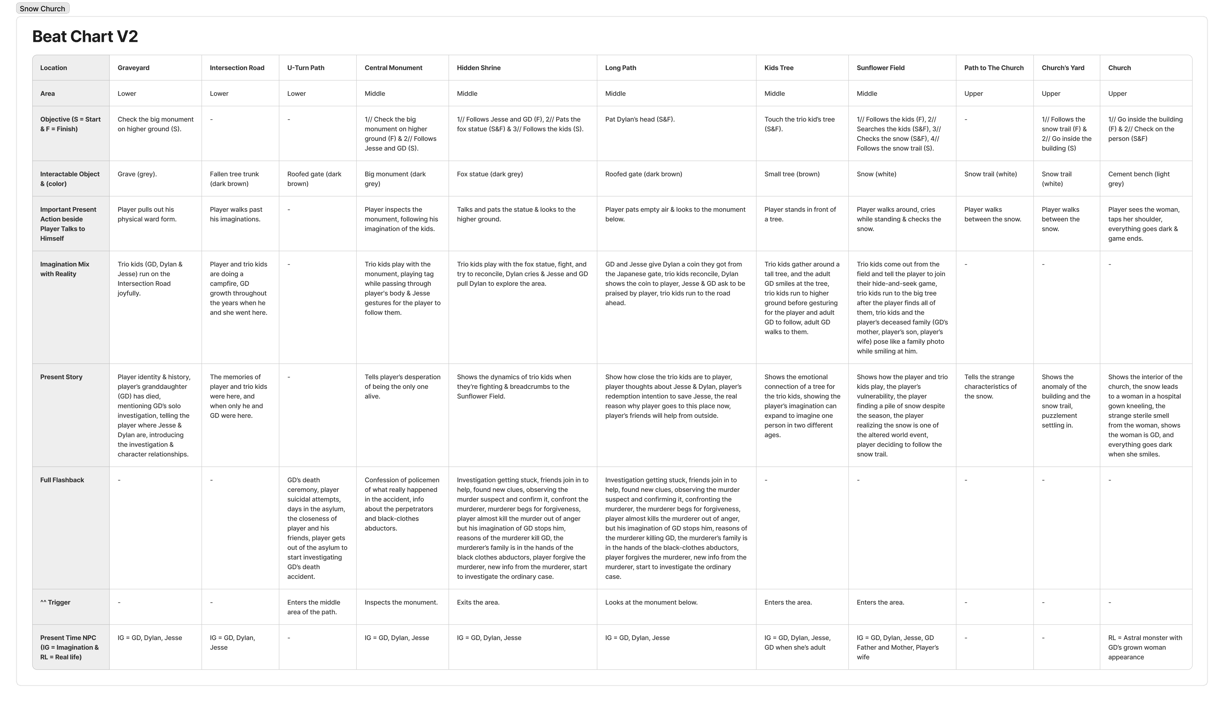


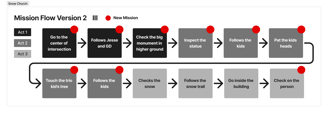



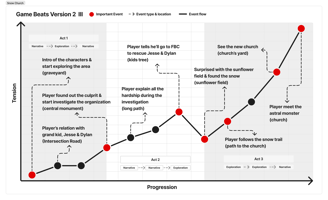
Game Beats Version 2
Area Flowchart Version 3
Beat Chart Version 2
Top-Down Sketches
I realized exploration sketches are the fastest way to explore and optimize a layout. So, because the first and second blockouts have uninteresting layouts, I decided to do exploration sketches. Also, learning from Black Puddle and Future Siren projects, because the best way to make a blockout is by directly making it in Unreal and playtesting it repeatedly, I switched the sketches’ focus from quantity to quality and limited myself to making 15 alternatives with detailed area separation so I don’t get too focused on the planning-until-it’s-perfect phase. In the end, I decide on three sketches to be made into blockouts, and these sketches are decided by using the elimination method with three criteria: how suitable the area layout is with area intention, explorable possibilities, and uniqueness.
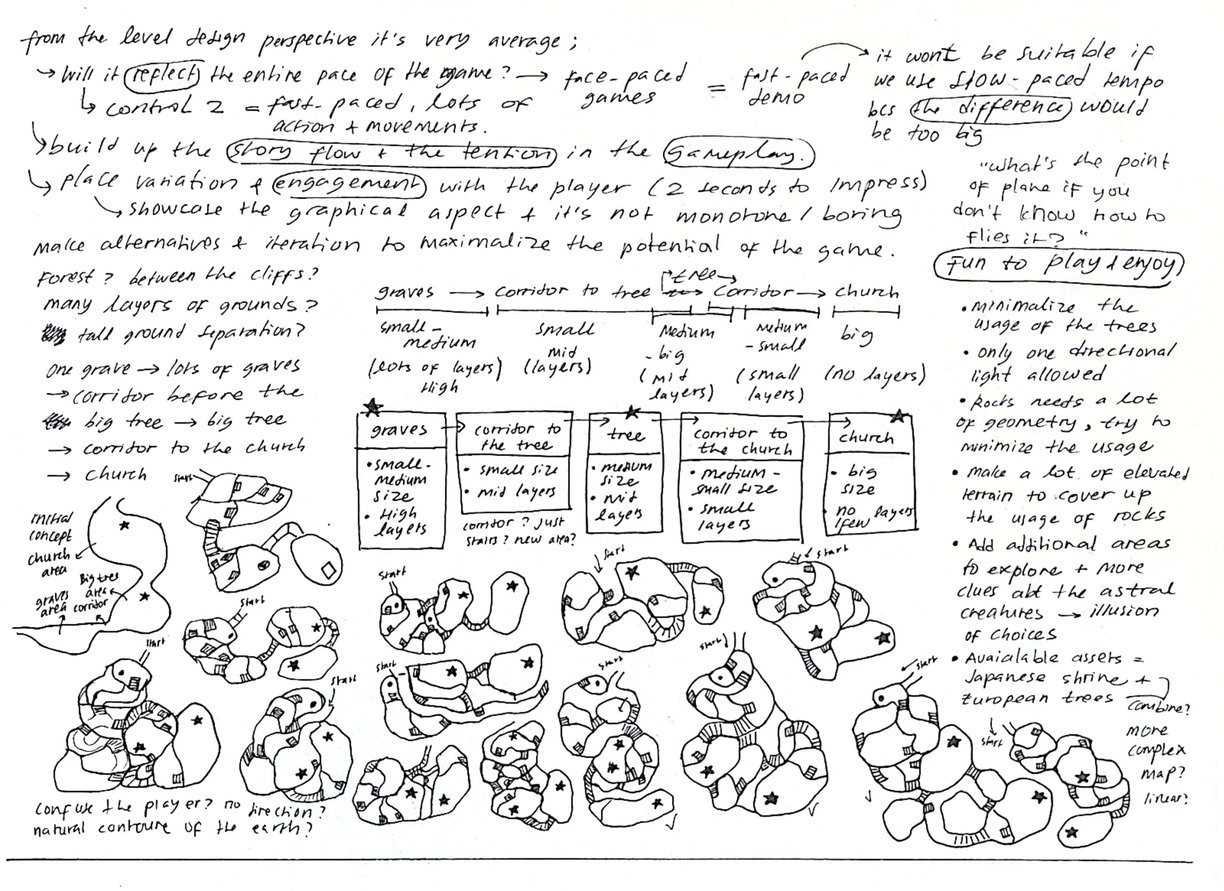

Low-Poly Props for Blockout 2
I explored more of Quixel Bridge and found out there are lots of old Japanese shrine assets. Seeing this potential, I continued to do some research on Pinterest about Japanese shrines in the mountains and realized this theme can be the solution to some problems, so I decided to use it. I made new low-poly assets from human-made Japanese shrine assets. But, because there is no Japanese tree asset available, I decide to use the available tree assets instead.


Blockout & Polishing Version 3
There are two phases in this iteration: the first one is making the blockout version from the three sketches and making the final blockout from it. The second phase is iterating the blockout and props placement, then finally polishing it to the environment design and light design phase.
Areas Exploration
This phase is focusing more on deciding the ground elevation and area exploration, so I didn’t add any props to avoid the distraction. From making 3 different blockouts from the sketches and playtested them, I realized each one of them has different strengths and weaknesses
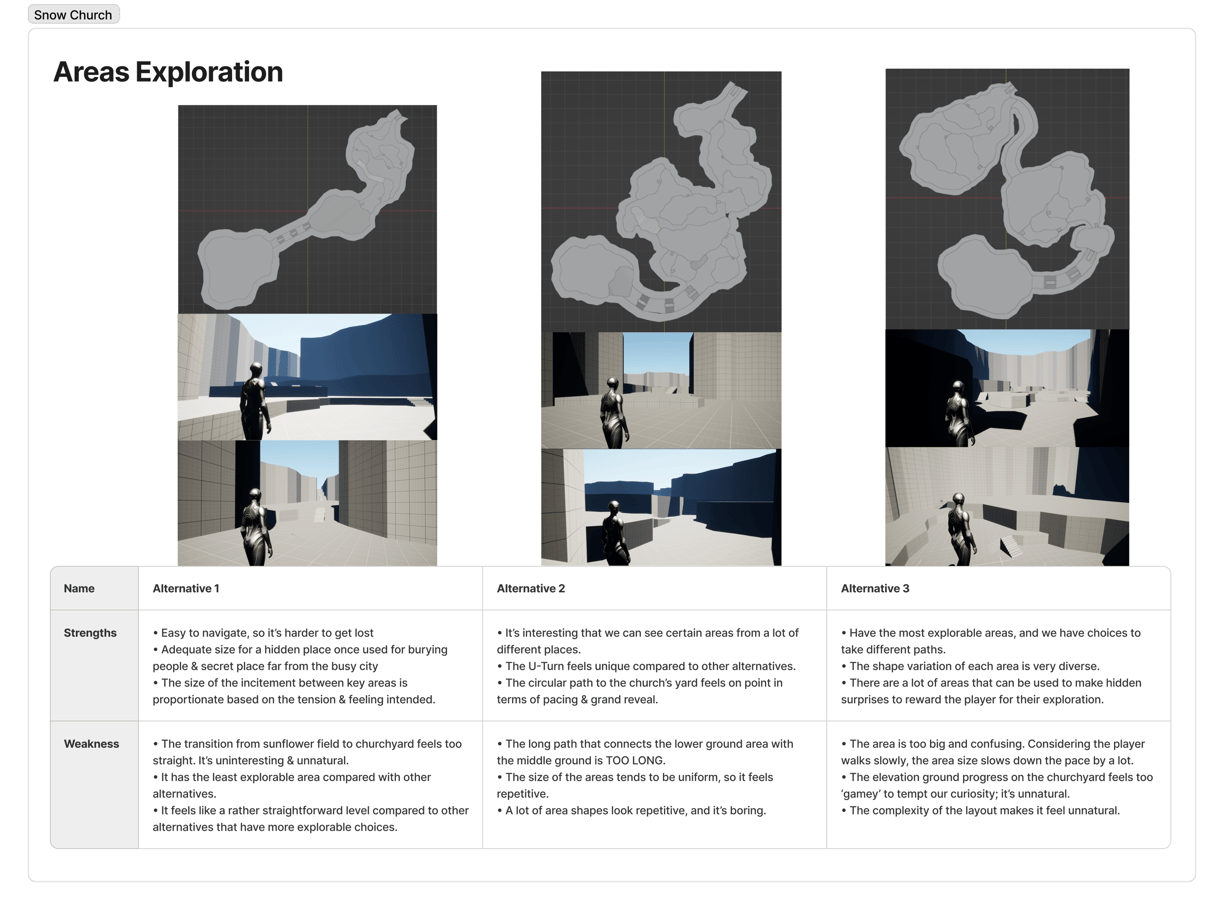

After some thorough analysis, I realized too much choice for exploration is not always the best solution in this project because it can make the player lose focus from the narrative. It’s crucial because this project is narrative-heavy and not a walking simulator. That’s why alternative 3 can’t be chosen as the final design.
From these options, I decided to combine the lower and middle areas from alternative 1 because it’s the most natural and not confusing to navigate compared to the others and the higher area from alternative 2 because it gives a more grand feeling when we climb up stairs in a bit of a narrow area, and we can immediately see the church in the open space.
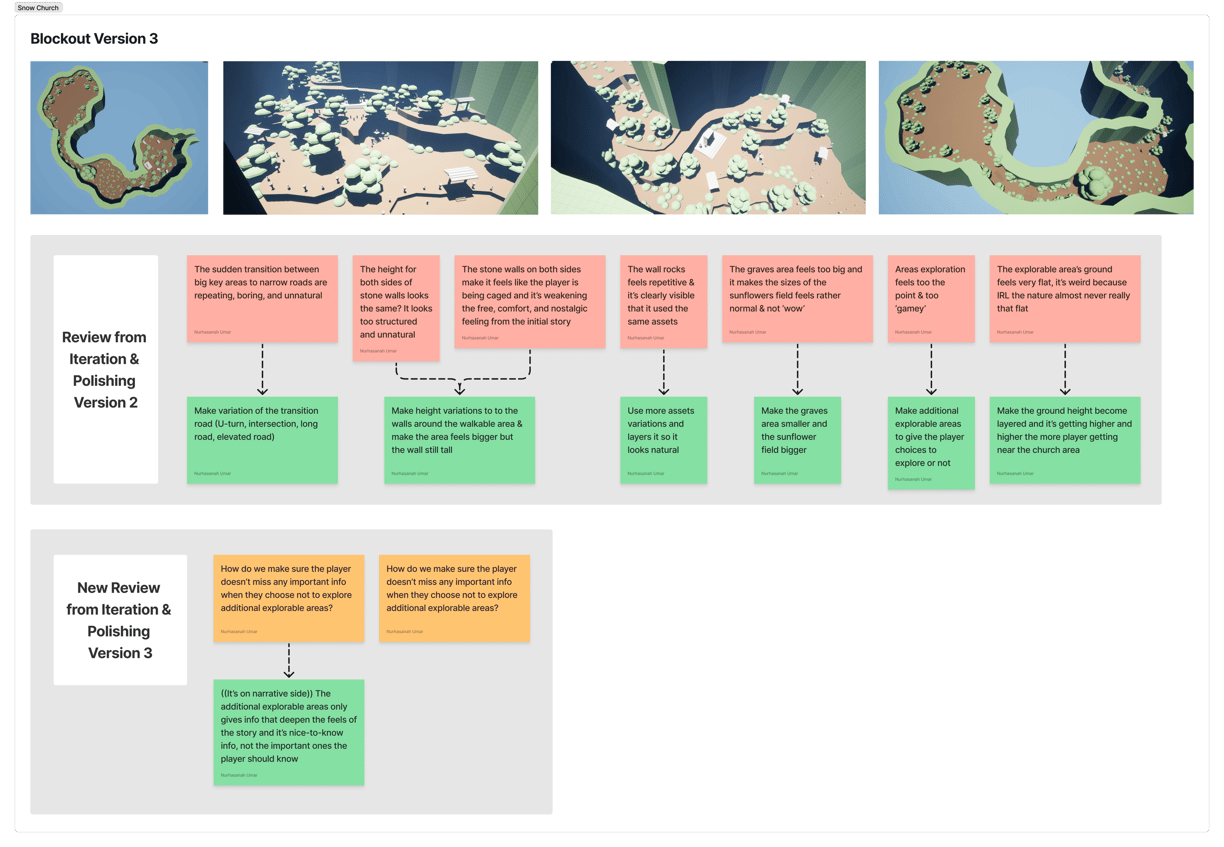

Getting Feedbacks From Friends
There are four respondents that I got the feedback from, and each of them has different specialty backgrounds and different kinds of feedback that I targeted. I did the interview one at a time and fixed the level based on feedback from the first respondent before continuing to the second respondent and so on, so there are 4 revisions in total before the final design was achieved. I also ask them to rank this project based on their area of expertise.


Final Blockout Breakdown
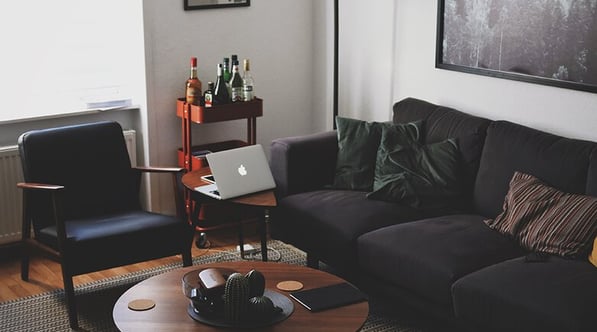









1. Graveyard → Introduce the mountain ambience, intensify it by making this area the lowest place in the level & introduce the backstory.
2A. Intersection Road → Adapting the player to the imagination that blends with reality (so the player doesn't think of it as a ghost), so the interactable objects are located kinda far from the hallucination places.
2B. U-Turn Path → Transitioning road between the lower and middle mountain area & symbolized the player is walking towards the future (higher ground), but his mind kept staying in the past (seeing the lower ground & full flashback).
3A. Central Monument → First interaction between the player's imagination and the player's physical body & cinematic reveals of the central monument.
3B. Hidden Shrine → Shows the dynamics between the trio (they fight), teaches the player to always seek what's behind what seemingly looks normal & gives rewards for their exploration.






4A. Long Path → Shows how dear the trio kids is to one another and the player & symbolizes the character and investigation development.
4B. Kids Tree → Designed to look very normal, it amplifies the transitioning effect when the player enters the Sunflower Field. Adult Eva interacts with the trio of kids & symbolizes every living being's will grows, but some feelings won't change.
5A. Sunflower Field → Adult Eva shows the field, the player and trio of kids play hide-and-seek, a roller coaster of emotion and anomalies, the imagination of the player's late family, inspect the snow, and follow its trail.
5B. Path to The Church → Transition area before the player reaches the mountain's peak so it focuses on building the tension & anticipation from following the snow trail.
6A. Church’s Yard → Clean the big yard to accentuate the grandness and peculiar feeling when discovering the church.
6B. Church → Minimalist and brutalism-style church to connect the visual aesthetic with the FBC building from Control & Focus to highlight the woman in a hospital gown (astral monster) in a visually aesthetic way.
Top-Down View
Perspective View
One Pager

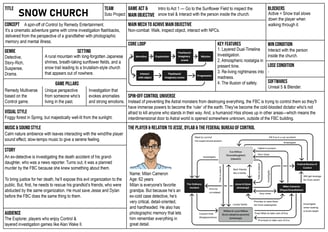
Things I’ve Learned
Making levels—whether it’s a skyscraper, cottage, old building, mountain, etc.—must start with deep research about the place that’ll be made. Each place has different characteristics and forms that caused them to become ‘distinguishable.’ Make sure to have parallel knowledge and a mindset with the type of place you’re working on.
Creating the level in 3D space right after making some sketches is far more efficient compared to perfecting the layout’s sketch and only working on the 3D space after it. Making sketches tends to be more about ‘brewing’ ideas, while making the 3D space is ‘testing the experience.’ So, focus on the experience’s side.
Every space in the level needs to have a purpose, no matter how trivial it is. It’s good if you can make each area packed with heavy narrative/discovery/combat, but it’s not a problem if the intention is only to give the player time to breathe or to enjoy the scenery. Make sure to adapt to the story’s pacing and progression.
Level design tends to combine all aspects of the game (narrative, environment concept, game mechanic, mission objective, etc.), so it’s important to blend everything seamlessly. To deepen the gameplay experience, it’s crucial to implement visual storytelling in all areas. This subtle change subconsciously completes the game in the player’s head.
Nature areas need different treatment from the human-made areas. Uneven grounds, organic objects blocking paths, making sure everything feels ‘natural’ and not like a human-made garden, etc. Use foliage right from the blockout phase so every aspect within the level is communicated clearly—it’ll minimize problems when the level continues to the 3D environment phase.
It’s important to give the player a sense of freedom so they don’t feel like they are forced to follow the story. In level design, it can be done by making extra explorable areas outside of the main ones (that follow the game beats). Make sure the areas are fun and enjoyable so it instantly rewards the player if they decide to explore it.
